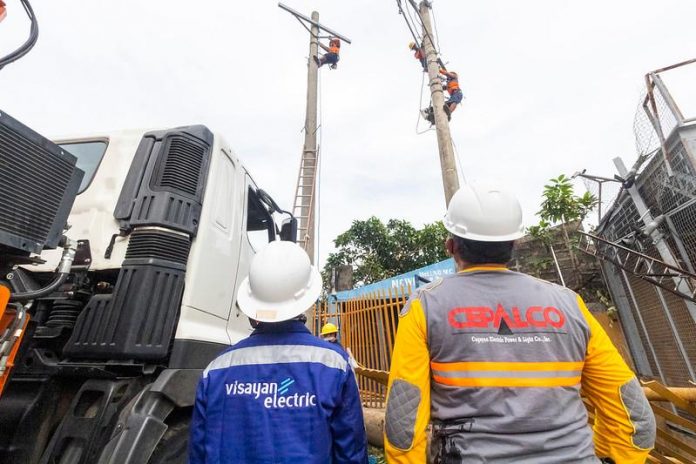Synergy among key stakeholders is crucial to building more resilient power systems, an official of Aboitiz Power Corporation said in light of the rebuilding efforts after typhoon Odette (international name Rai) damaged communities across the Visayas and Mindanao in December last year.
In a webinar dubbed “Road to Resilience: Preparing Our Communities for Natural Disaster” on Wednesday, Jan. 26, AboitizPower Distribution Business Group Chief Operating Officer Anton Mari G. Perdices said Odette was a sobering experience for many utilities, adding that “when a natural disaster like Typhoon Odette strikes with severity that no single corporation can handle, collaboration really is the way to go.”
“We have a long way to go before we can have truly resilient power systems, especially against the backdrop of more severe weather incidents like this recent typhoon, but we will get there. There has to be a balance between the responsibilities of the government, private sector, and even consumers to make this system work,” he shared.
The webinar, organized by Liveable Cities Philippines, sought to address the steps needed to take to prepare for and build resilience against similar storms in the future or in other parts of the country.
“The experience with Supertyphoon Odette (international name: Rai) illustrates the need for more resiliency measures across the country. Odette knocked out Power, Telecommunications, Water, and Fuel supply aside from destroying homes and buildings. More than a month after it made landfall, relief operations for food, water, and hygiene kits are still ongoing in some places while early recovery and rebuilding need to start in earnest. The recovery could take months,” Liveable Cities Challenge Chairman Guillermo “Bill” Luz said.
During his talk, Perdices cited the advantage of moving utility lines underground just as they have already done for some parts of the cities of Cebu and Davao. He noted that this should be done strategically, given the required investment for such undertaking. Nonetheless, he said they are willing to work with government and industry partners to come up with mechanisms to make these projects commercially viable.
He added that investing in embedded generation facilities and exploring avenues for collaboration within the private sector are also among the ways they are looking to move forward after Odette.
AboitizPower subsidiary Visayan Electric Co., Cebu’s major electric distribution utility, saw practically its entire franchise area affected when the strongest typhoon to hit the island since Ruping in 1990 made landfall in the southern part of the province on Dec. 16, 2021.
Perdices said that as of Wednesday, January 26, 2022, power consumption within the Visayan Electric franchise area has reached 437.71 MW, which is 88% of the pre-Odette power consumption of 495 MW.
He added they estimate to have already restored power to 411,579 customers or 86.8% of the total 474,182 customers within our franchise area.
However, Perdices shared that there are still some key challenges that they are facing now that they are down to the last stretch. A few pockets in urban areas still need power, which will require house-to-house visits, specific troubleshooting, and addressing load-side issues or damage to customers’ electrical systems.
“As we move to the outskirts of our franchise area, access to trucks and heavy equipment will become more limited, work will be slower and more labor-intensive, given that these are remote locations. There are even some areas that are totally inaccessible to vehicles, prompting us to use alternative means of transporting poles and equipment such as carabaos,” he said.
On a more positive note, Perdices pointed out that they would not have reached great progress in restoring power to Cebu today if it were not for the linemen and industry support they received in the past month, reinforcing his belief that synergy is indeed necessary to rise again.
As of last week, Visayan Electric had around 280 additional linemen from distribution utilities and electric cooperatives from other parts of the country augmenting its 308-strong Visayan Electric workforce currently on the ground. On top of this, the utility also had local engineering companies that helped in the power restoration efforts.
The company official called on the public sector to create a clear roadmap and policy guide rails towards a more resilient energy system; compliance, support, and innovation from the private sector; as well as cooperation and buy-in from civil society.
“If we constantly work together, not only are we building more resilient power systems, we’re also building a resilient future for all,” said Perdices.







